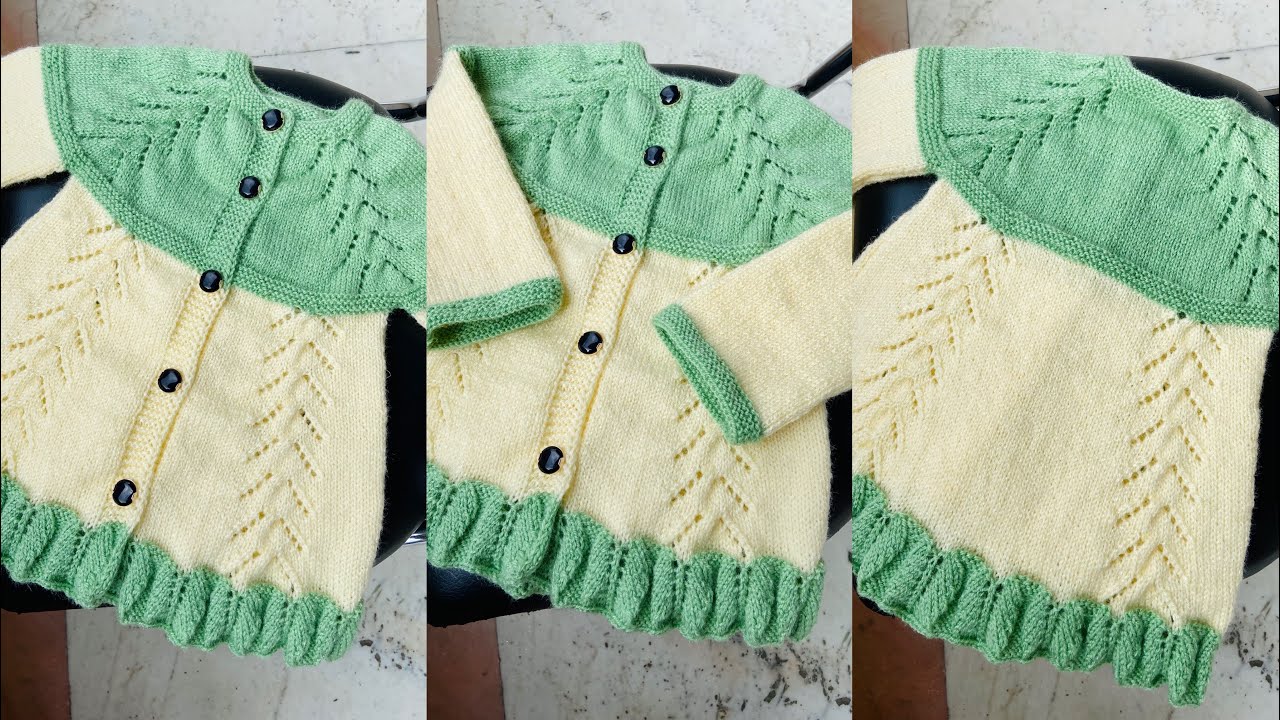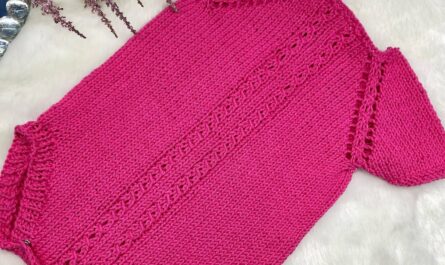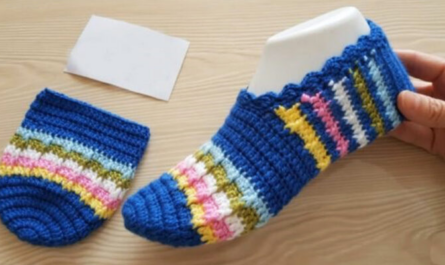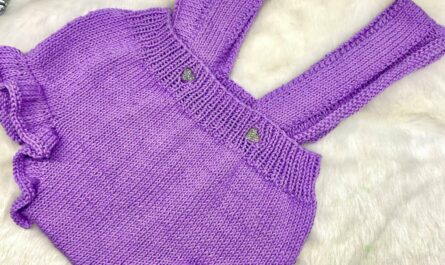Imagine a garment that’s both a cozy cardigan and an adorable dress, perfect for keeping a little one snug while allowing for those precious baby wiggles. That’s the magic of a knitted baby frock-cardigan – a charming hybrid that offers the ease of a button-up sweater with the delightful elegance of a tiny dress. This versatile piece is not only incredibly practical for layering and temperature regulation but also makes a stunning, cherished keepsake.
This detailed article will explore the beauty of the knitted baby frock-cardigan, guiding you through design considerations, key elements, and tips to help you create a truly enchanting garment.
What is a “Frock-Cardigan” in Knitting?
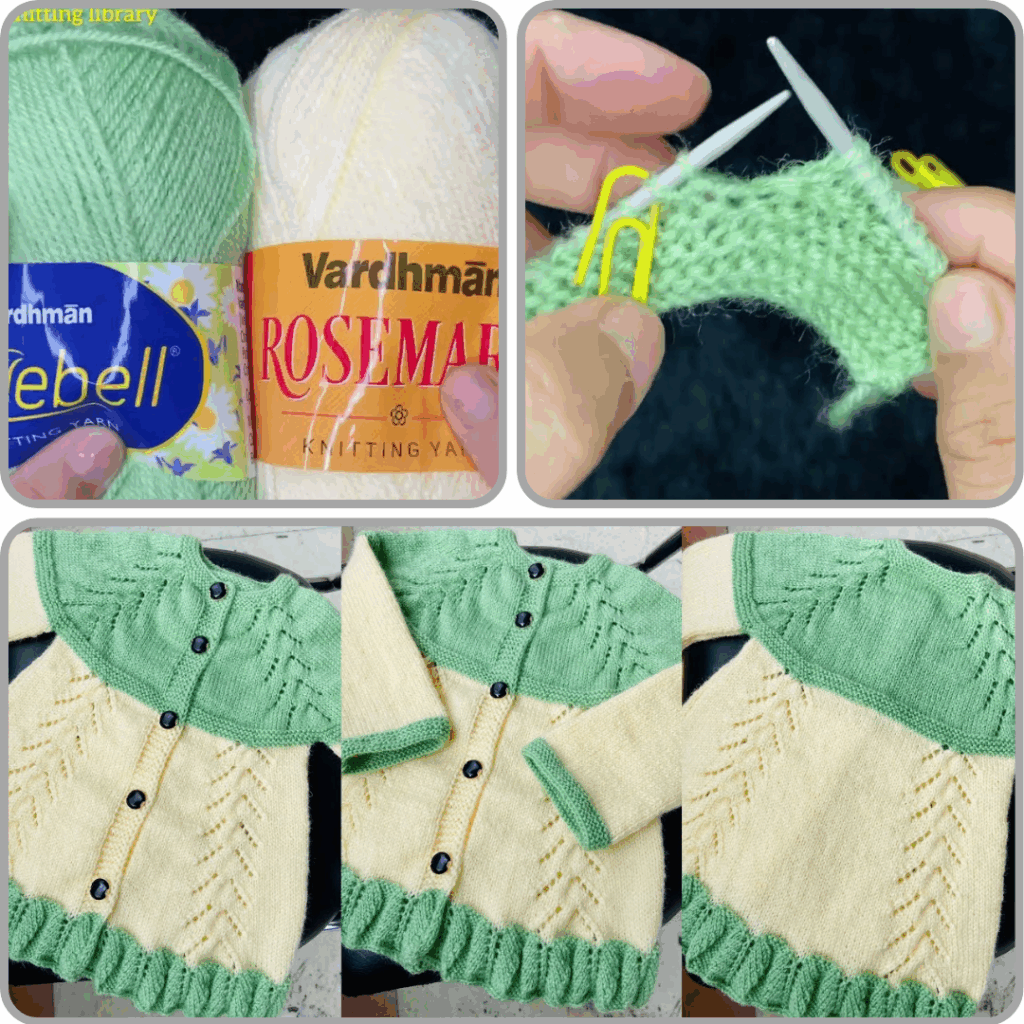
In the context of baby knitting, a “frock-cardigan” typically refers to a garment that:
- Opens fully down the front (like a cardigan), making it easy to put on and take off a wobbly baby.
- Has a defined bodice section (like a sweater top).
- Transitions into a flared or full “skirt” section (like a dress), making it longer than a typical sweater and giving it a dress-like appearance.
It’s the ultimate blend of comfort, style, and practicality for babies and toddlers.
Why Knit a Baby Frock-Cardigan?
- Versatility: It functions as a lightweight dress in warmer weather or as an extra layer over leggings or a onesie when it’s chilly.
- Ease of Dressing: The full front opening is a dream for parents, especially during diaper changes or when dressing a sleeping baby.
- Heirloom Potential: Its dress-like charm and intricate details (which can be simple!) make it an ideal candidate for passing down through generations.
- Customization: You have complete control over the yarn, colors, stitch patterns, and embellishments, allowing you to create a truly unique piece.
- Skill Development: This project offers a wonderful opportunity to practice shaping, working with lace or textured stitches, knitting buttonholes, and creating a flared garment.
Key Considerations for Design & Yarn:
Choosing the right materials and planning your design are crucial for a beautiful and functional frock-cardigan.
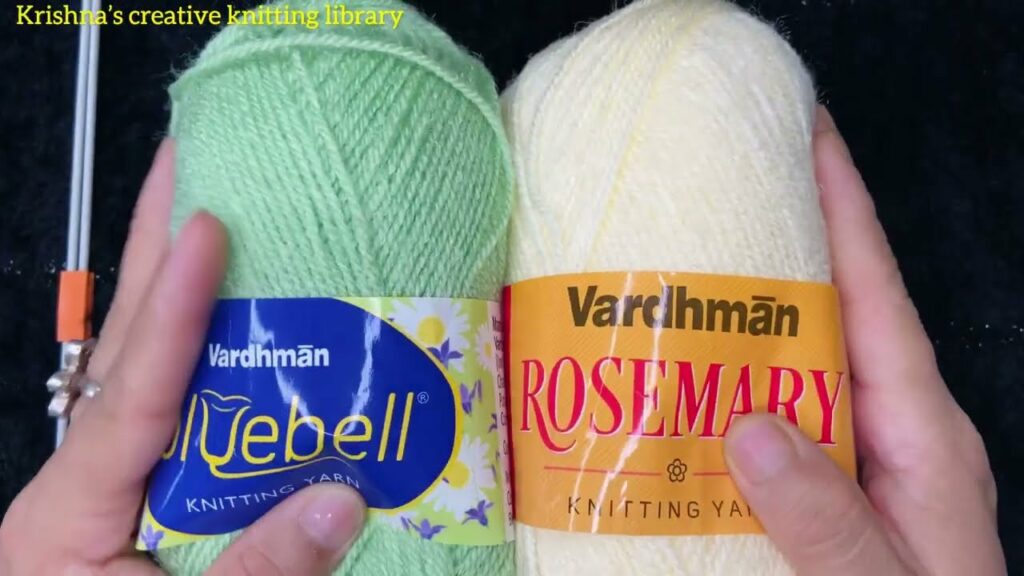
- Yarn Choice (Utmost Importance for Delicates!):
- Fiber: Always prioritize softness, breathability, and non-irritating qualities for baby skin.
- Superwash Merino Wool: The top choice for many. Incredibly soft, warm yet breathable, and (vitally!) machine washable.
- Organic Cotton or Bamboo: Excellent for warmer climates, babies with sensitive skin, or those seeking plant-based fibers. They are soft and breathable.
- Silk Blends: For a truly luxurious feel, often blended with merino or cotton for stability and strength.
- Baby-Specific Acrylics/Blends: High-quality, soft acrylics can be durable, hypoallergenic, and very easy to care for.
- Weight:
- DK (Double Knitting) or Sport Weight: These are commonly recommended. They offer a good balance of warmth, stitch definition, and a reasonable knitting pace without being too bulky for delicate items.
- Fingering (4-ply): For a very fine, delicate, and lightweight frock-cardigan, especially if it’s primarily a warm-weather garment or intended for intricate lace.
- Color Palette:
- Classic Pastels: Soft creams, blush pinks, pale blues, mint greens, gentle lavenders, and sunny yellows.
- Muted Tones: Sage green, dusty rose, soft teal, dusty plum, light rust. These offer a modern, sophisticated look.
- Neutrals: Oatmeal, light grey, pure white, gentle taupe. Elegant and versatile.
- Variegated/Self-Striping Yarns: These create effortless visual interest, allowing the yarn to do the colorwork for you.
- Consider Color Blocking: A contrasting yoke, sleeves, or the transition between the bodice and skirt.
- Safety: Ensure your chosen yarn is machine washable (or at least easy-care) and hypoallergenic.
- Fiber: Always prioritize softness, breathability, and non-irritating qualities for baby skin.
- Sizing:
- Frock-cardigans typically range from Newborn to 18-24 months.
- Gauge Swatch (Absolutely Non-Negotiable!): This is the single most important step for any garment.
- Knit a large swatch (at least 6×6 inches / 15×15 cm) in the main stitch pattern.
- Wash and block it exactly as you plan to treat the finished garment.
- Measure your stitches and rows per inch/cm precisely.
- Adjust your needle size until your swatch matches the pattern’s gauge. This ensures your frock-cardigan will be the correct size.

- Closure:
- Buttons: Small, flat buttons are common. Ensure they are securely sewn and large enough not to be a choking hazard (typically 1/2″ or larger for garments). Wooden, mother-of-pearl, or matte plastic buttons are popular choices.
- Ties: Knitted I-cords or ribbon ties can be charming, but always ensure ties are very short and pose no strangulation risk around a baby’s neck. They are best placed at the hem or side seams.
- Snaps: Can be sewn onto the plackets for a very clean, flat closure.
Defining the “Frock-Cardigan” Silhouette & Design Elements:
This is where the “beautiful” comes in!
- The Bodice:
- Fit: Usually fitted or semi-fitted to the underarm, then potentially slightly flared to the waist or just above.
- Opening: Almost always opens fully down the front.
- Neckline: A gentle crew neck, a classic V-neck, or a sweet scoop neck are common.
- Yokes:
- Circular Yoke: All shaping happens evenly around a circular yoke, often in a different stitch pattern (like lace or colorwork).
- Raglan Yoke: Diagonal increase lines from the neck to the underarms define the shoulder shaping.
- Set-in Sleeves: More traditional, requiring seaming.
- The Sleeves:
- Classic Straight: Simple and practical.
- Gently Tapered: Slightly narrower at the cuff.
- Puff Sleeves: Achieved through increases at the sleeve cap (top) or gathering stitches into a cuff. These add a delightful, whimsical touch.
- Short Sleeves: Perfect for a warmer weather frock-cardigan.
- Cuffs: Often finished with simple ribbing, garter stitch, or a picot edging.
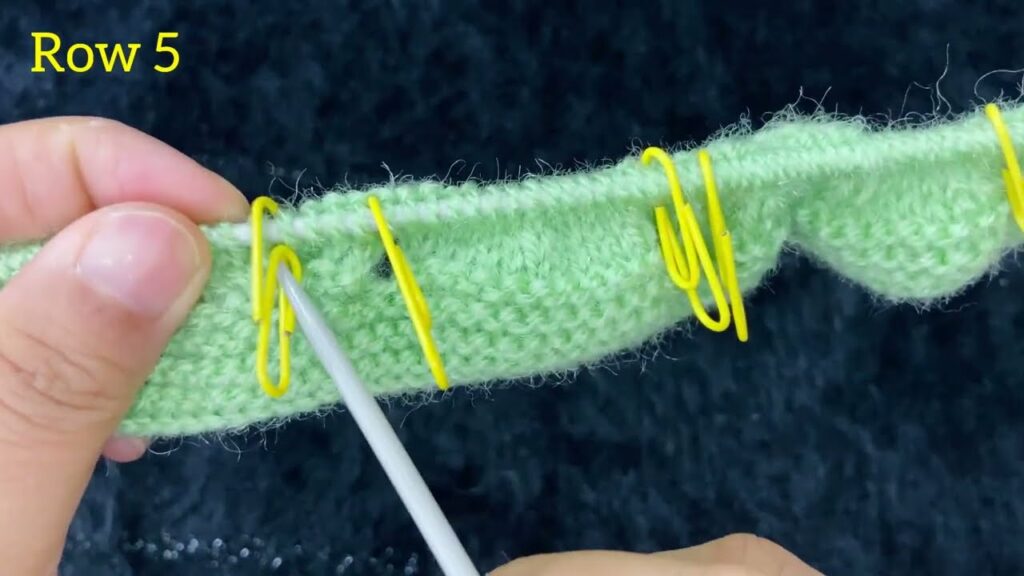
- The “Frock” Skirt Section (The Key Feature):
- Transition: The defining characteristic. At the waist (or empire line), there’s a significant increase in stitch count to create the flare. This can be a single increase round (e.g., KFB in every stitch) or a series of increase rounds.
- Shape:
- A-line: A gentle, gradual flare from the waist/hip down.
- Gathered/Full: Achieved by dramatic increases, creating a very wide skirt that gathers softly from the bodice.
- Pleated/Textured: Certain stitch patterns (like K2, P2 ribbing that isn’t pulled tight, or specific folded patterns) can create a pleated effect.
- Length: Typically mini (mid-thigh) to knee-length for babies and toddlers.
- Beautiful Stitch Patterns:
- Lace (Highly Recommended for Frocks):
- All-Over Lace: Delicate, repeating lace patterns (e.g., simple eyelets, small fern motifs, tiny hearts, faggoting stitch) covering the entire skirt or even the whole garment.
- Lace Edging: A knitted lace border applied to the hem, cuffs, or front bands.
- Lace Yokes: A focal point for top-down designs.
- Textured Stitches:
- Moss/Seed Stitch: Creates a beautiful, subtle texture that lies flat and prevents curling. Excellent for edgings, yokes, or full bodies.
- Lace (Highly Recommended for Frocks):
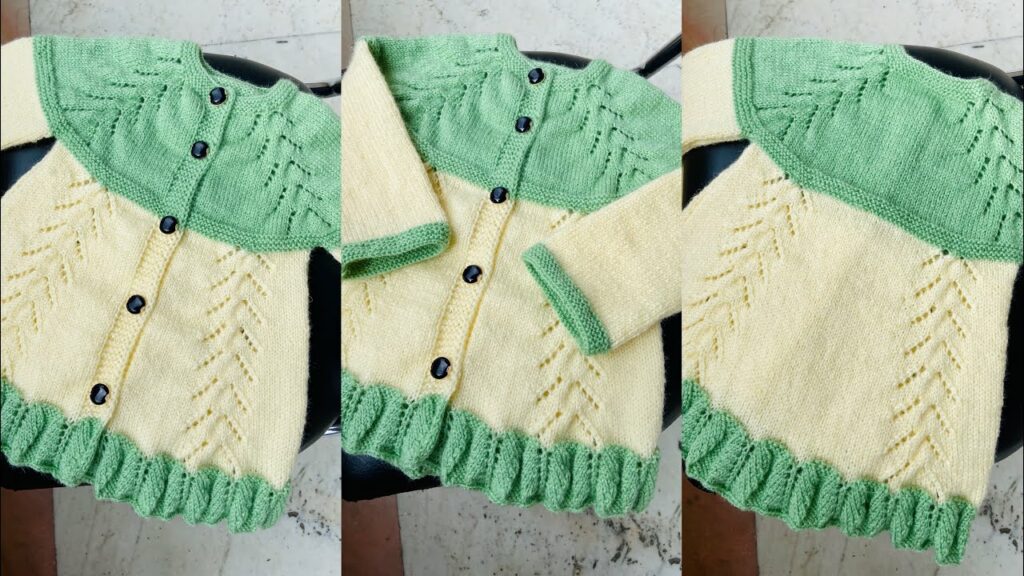
- Basketweave: A more pronounced, pleasing texture.
- Simple Cables: Classic, adds sophistication, often used in narrow panels, as trim, or on front bands.
- Colorwork (Subtle is Key):
- Elegant Stripes: Thin, evenly spaced stripes on the bodice, sleeves, or skirt using complementary colors.
- Color Blocking: A contrasting color for the yoke, sleeves, or the entire skirt section.
- Variegated/Self-Striping Yarns: These yarns create their own beautiful color gradients without any extra work.
- Charming Details & Embellishments:
- Ruffle Hem: Created by significantly increasing stitches right before the bind-off or by knitting a separate ruffled border and sewing it on.
- Picot Edging: A delicate, scalloped bind-off that adds a sweet, decorative touch to hems, cuffs, or necklines.
- Applied Motifs: Small knitted or crocheted flowers, leaves, stars, or simple bows securely sewn onto the garment. Ensure no loose parts or choking hazards.
Common Construction Methods:
For a frock-cardigan, top-down seamless methods are often preferred for their elegance and ease of customization.
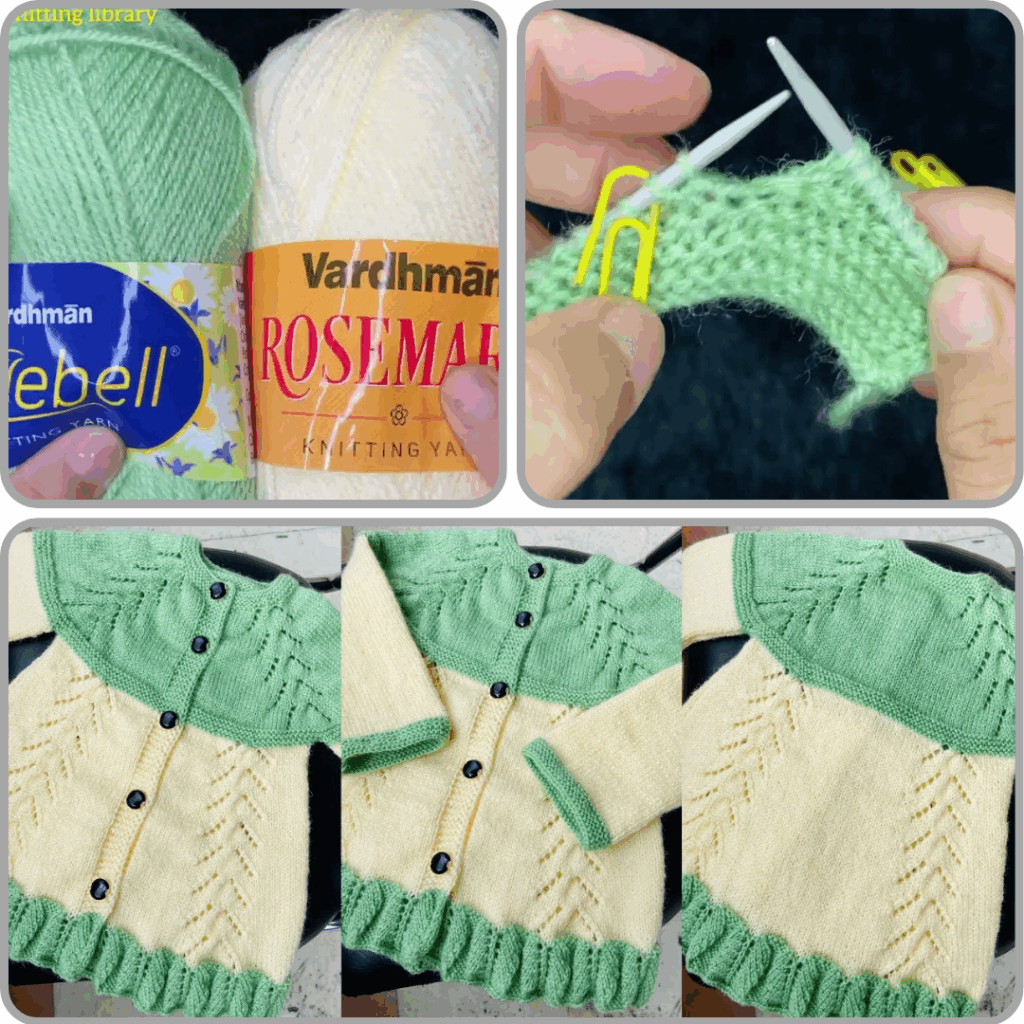
- Top-Down Raglan (Seamless):
- How it Works: Cast on for the neckline, knit the yoke (increasing at raglan lines), then separate stitches for the sleeves (put on hold) and the body. Continue knitting the body flat (to create the cardigan opening). At the “waist” where the skirt begins, you’ll work a significant increase round to create the flare, then continue knitting the skirt. Sleeves are knit last.
- Benefits: No seaming (yay!), easy to adjust length, simple to try on, excellent for continuous stitch patterns.
- Ideal for: Most frock-cardigans due to the ease of creating the skirt flare.
- Bottom-Up (Seamed or Seamless):
- Seamed: Knit the skirt flat, then decrease for the waist, then knit the bodice pieces flat, and sew them all together. Requires more precise seaming.
- Seamless: Knit the skirt in the round, decrease for the waist, then transition to knitting the bodice flat, then sleeves. More complex to manage the transitions.
General Knitting Tips for a Successful Frock-Cardigan:
- Read the Entire Pattern First: Understand the flow, construction, and any tricky parts before casting on.
- Watch Video Tutorials: For any new techniques (e.g., specific lace stitch, buttonhole type, Kitchener stitch for seamless joins).
- Use Stitch Markers Liberally: Essential for tracking raglan lines, stitch pattern repeats, and the beginning of rows/rounds.
- Don’t Fear Mistakes: They are part of the learning process! A good stitch fixer or seam ripper is your friend.
- Block Your Work! This step is transformative, especially for lace and shaping. It evens out stitches, opens up the fabric, and helps the garment achieve its intended size and drape.
- Baby Safety First: Double-check that all buttons are sewn on extremely securely. Avoid any long ties or loose embellishments that could pose a choking hazard.
Video Tutorial :
Knitting a baby frock-cardigan is a truly delightful and rewarding experience. You’ll create a garment that is not only beautiful and functional but also a heartfelt expression of your skill and affection, sure to be treasured by the little one and their family. Happy knitting!
